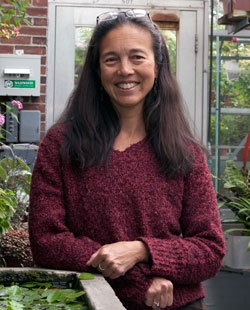
Celia Chen is researching mercury concentrations in organisms low on the food chain in the Androscoggin River in northern N.H. (photo by Joseph Mehling ’69)
Celia Chen is a collector—of things like mayflies, stoneflies, dragonflies, and snails.
New Hampshire Public Radio recently caught up with Chen, a research professor in the Department of Biological Sciences and a principle investigator in the Dartmouth Toxic Metals Superfund Research Program. She and her team have been conducing research at the Androscoggin River in the Berlin, N.H., area. They are looking at mercury levels in invertebrates, which can have a multiplier effect as the smaller animals are eaten by bigger ones.
“There’s been some indication from the EPA studies that were done that there are elevated levels in some of the fish that are the size and species that humans consume, and we’re particularly concerned with how the mercury gets into those larger fish from lower in the food chain,” Chen told NHPR.
What Chen and her colleagues find will help the EPA as it investigates the former ChlorAlikali paper plant, the Berlin, N.H., Superfund site that is the source of much of the mercury.
Listen to the full story, which aired on New Hampshire Public Radio News on 08/23/11.

